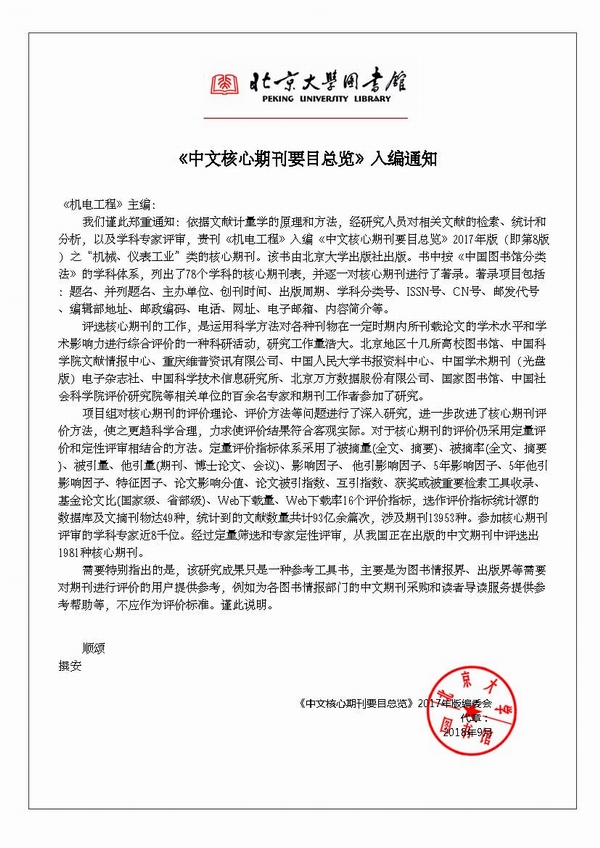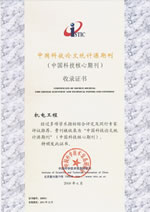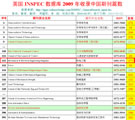
Founded in 1971 >
Chinese Sci-tech Core Periodicals >
British Science Abstracts (SA, INSPEC) Indexed Journals >
United States, Cambridge Scientific Abstract: Technology (CSA: T) Indexed Journals >
United States, Ulrich's Periodicals Directory(UPD)Indexed Journals >
United States, Cambridge Scientific Abstract: Natural Science (CSA: NS) Indexed Journals >
Poland ,Index of Copernicus(IC) Indexed Journals >
International Standard Serial Number:
ISSN 1001-4551
Sponsor:
Zhejiang University;
Zhejiang Machinery and Electrical Group
Edited by:
Editorial of Journal of Mechanical & Electrical Engineering
Chief Editor:
ZHAO Qun
Vice Chief Editor:
TANG ren-zhong,
LUO Xiang-yang
Tel:
86-571-87041360,87239525
Fax:
86-571-87239571
Add:
No.9 Gaoguannong,Daxue Road,Hangzhou,China
P.C:
310009
E-mail:
meem_contribute@163.com
Abstract: Considering the difficulties of traditional rolling bearing faults identification methods in manual feature extraction, manual feature selection and fault identification of rolling bearing vibration signals, a method based on complete ensemble symplectic geometric decomposition (CESGD) and improved multi-channel convolutional network (IMCCN) was proposed. Firstly, in order to improve the signal-to-noise ratio (SNR) of bearing vibration signals based on the idea of complete ensemble empirical mode decomposition, the white noise pairs with equal amplitude and opposite signs were added to vibration signals; the symplectic geometric decomposition (SGD) was employed to decompose the bearing multi-sensor vibration signals into several symplectic geometric mode components (SGMCs) and the integrated average was performed. The SGMCs which could better reflect the fault characteristics of the rolling bearing were selected and reconstructed by evaluation index to reach the purpose of effective signals noise reduction. Then, the IMCCN was proposed on the basis of convolutional neural network (CNN), and the noise-reduced signals of CESGD were input into IMCCN for automatic feature learning and fault identification. Finally, in order to verify the feasibility and effectiveness of the CESGDIMCCN model, it was tested on the bearing failure simulation test bench and the CWRU bearing data set, and the results were compared and analyzed with the failure recognition results obtained by other methods. The research results show that the proposed CESGD-IMCCN model can effectively identify different fault conditions and severity types of rolling bearing, the fault recognition rate reaches 99.52% and the standard deviation is only 0.12. The CESGD-IMCCN model avoids the complex manual feature extraction process to a certain extent; with high fault recognition accuracy and stability, it shows obvious advantages over other models in terms of generalization ability, and fault identification ability. For vibration signals containing noise, the fault recognition accuracy is still high.
Key words: rolling bearing; fault identification; complete ensemble symplectic geometric decomposition(CESGD); improved multi-channel convolutional network(IMCCN)
SHEN Wei-qing, ZHOU Zheng-ping, CHANG Zhao-qing. Fault identification of rolling bearing based on CESGD and IMCCN[J].Journal of Mechanical & Electrical Engineering, 2021,38(12):1579-1585,1598.








